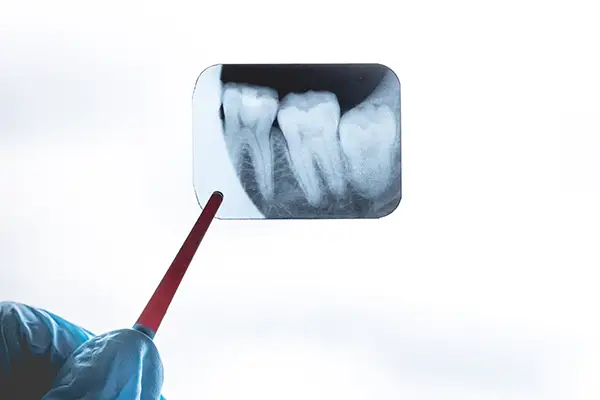What You Need to Know about Pericoronitis
Posted on 6/16/2025 by Djawdan Center |
 Have you ever experienced pain, swelling, or redness around your wisdom teeth? If so, you might be experiencing pericoronitis. This condition can be uncomfortable and even lead to more serious complications if left untreated. In this article, we'll explore everything you need to know about pericoronitis, including its causes, symptoms, and treatment options. Have you ever experienced pain, swelling, or redness around your wisdom teeth? If so, you might be experiencing pericoronitis. This condition can be uncomfortable and even lead to more serious complications if left untreated. In this article, we'll explore everything you need to know about pericoronitis, including its causes, symptoms, and treatment options.
What is Pericoronitis?
Pericoronitis is an infection of the gum tissue that surrounds a partially erupted tooth, most commonly a wisdom tooth. This infection occurs when bacteria gets trapped under the gum flap that covers the partially erupted tooth.
What Causes Pericoronitis?
Several factors can contribute to the development of pericoronitis, including:
| • |
Partially erupted teeth: When wisdom teeth only partially erupt through the gums, a flap of gum tissue can cover the tooth, creating a space where bacteria can easily accumulate. |
| • |
Poor oral hygiene: Inadequate brushing and flossing can allow plaque and bacteria to build up around the partially erupted tooth, increasing the risk of infection. |
| • |
Trauma: Injury to the gum tissue surrounding a partially erupted tooth can also increase the risk of pericoronitis. |
| • |
Impacted wisdom teeth: Wisdom teeth that are impacted, meaning they are unable to fully erupt through the gums, are more likely to develop pericoronitis. |
What are the Symptoms of Pericoronitis?
The most common symptoms of pericoronitis include:
| • |
Pain: This is the most common symptom and can range from mild to severe. |
| • |
Swelling: The gums around the affected tooth may become swollen and red. |
| • |
Redness: The gums surrounding the affected tooth may appear red and inflamed. |
| • |
Bleeding: The gums may bleed easily when touched. |
| • |
Bad breath: A foul odor may be present due to the buildup of bacteria. |
| • |
Difficulty opening the mouth: The swelling may make it difficult to open the mouth fully. |
| • |
Swollen lymph nodes: The lymph nodes in the neck may become swollen and tender. |
How is Pericoronitis Diagnosed?
A dentist can diagnose pericoronitis by examining the affected area and taking a medical history. An X-ray may also be taken to determine the position of the wisdom tooth and to rule out other potential causes of the infection.
How is Pericoronitis Treated?
The treatment for pericoronitis will depend on the severity of the infection. In some cases, the infection may resolve on its own with good oral hygiene practices. However, if the infection is more severe, your dentist may recommend one or more of the following treatments:
| • |
Rinsing with warm salt water: Rinsing several times a day with warm salt water can help to reduce swelling and pain and remove debris from the affected area. |
| • |
Antibiotics: Antibiotics may be prescribed to help fight the infection. |
| • |
Irrigation: Your dentist may use a special tool to irrigate the area around the affected tooth to remove bacteria and debris. |
| • |
Surgical removal of the gum flap: In some cases, your dentist may recommend surgically removing the gum flap that is covering the partially erupted tooth. This will allow for better cleaning of the area and reduce the risk of future infections. |
| • |
Wisdom tooth extraction: If the infection is severe or if the wisdom tooth is impacted, your dentist may recommend extracting the tooth. |
Can Pericoronitis be Prevented?
The best way to prevent pericoronitis is to practice good oral hygiene. This includes brushing your teeth twice a day, flossing daily, and seeing your dentist for regular checkups and cleanings. If you have partially erupted wisdom teeth, it is important to pay extra attention to cleaning them. Your dentist may recommend using a special mouthwash or irrigator to help keep the area clean.
Regular dental visits are crucial for prevention dentistry. During these visits, your dentist can monitor the development of your wisdom teeth and identify any potential problems early on. If your dentist determines that your wisdom teeth are likely to cause problems in the future, they may recommend removing them before they fully erupt.
Conclusion
Pericoronitis is a common infection that can cause pain, swelling, and other unpleasant symptoms. By practicing good oral hygiene and seeing your dentist for regular checkups, you can help to prevent pericoronitis and keep your mouth healthy. If you experience any symptoms of pericoronitis, it is important to see your dentist right away for diagnosis and treatment.
|
|
